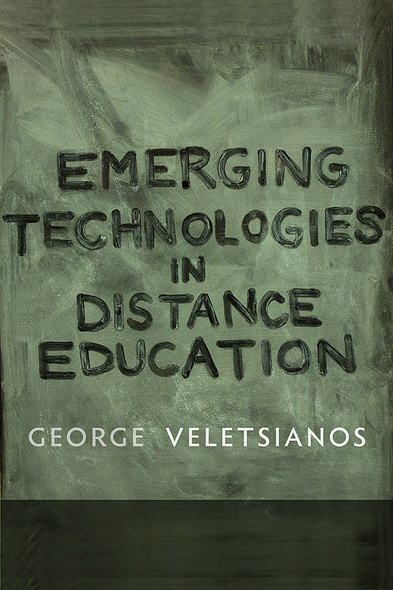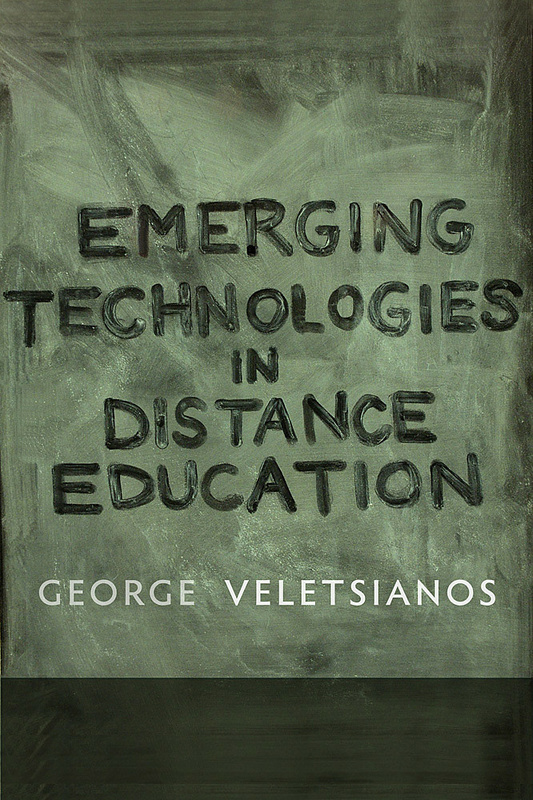
international experts who highlight pedagogical, organizational,
cultural, social, and economic factors that influence the adoption and
integration of emerging technologies in distance education. The volume
provides expert advice on how educators can launch effective and
engaging distance education initiatives in response to technological
advancements, changing mindsets, and economic and organizational
pressures. Emerging Technologies in Distance Education goes
beyond the hype surrounding Web 2.0 technologies and confronts the
important issues that researchers and educators need to consider to
enhance educational practice.
Introduction / George Veletsianos
Part 1. Foundations of Emerging Technologies in DistanceEducation
1. A Definition of Emerging Technologies for Education /George Veletsianos
2. Theories for Learning with Emerging Technologies /Terry Anderson
3. Imagining Multi-Roles in Web 2.0 Distance Education /Elizabeth Wellburn & B.J. Eib
4. Beyond Distance and Time Constraints: Applying SocialNetworking Tools and Web 2.0 Approaches in Distance Education /Mark J.W. Lee & Catherine McLoughlin
Part 2. Learning Designs for EmergingTechnologies
5. “Emerging”: A Re-Conceptualization ofContemporary Technology Design and Integration / The LearningTechnologies Collaborative
6. Developing Personal Learning Networks for Open and SocialLearning / Alec Couros
7. Creating a Culture of Community in the Online ClassroomUsing Artistic Pedagogical Technologies / Beth Perry & MargaretEdwards
8. Structured Dialogue Embedded within Emerging Technologies/ Yiannis Laouris, Gayle Underwood, Romina Laouri, & AlecoChristakis
Part 3. Social, Organizational, and Contextual Factors inEmerging Technologies Implementations
9. Personal Learning Environments / Trey Martindale &Michael Dowdy
10. Learning, Design, and Emergence: Two Case Studies of Moodle inDistance Education / Andrew Whitworth & Angela Benson
11. Institutional Implementation of Wikis in Higher Education: TheCase of the Open University of Israel (OUI) / Hagit Meishar-Tal,Yoav Yair, & Edna Tal-Elhasid
12. The Use of Web Analytics in the Design and Evaluation ofDistance Education / P. Clint Rogers, Mary R. McEwen, & SaraJoyPond
13. New Communications Options: A Renaissance in Videoconference Use/ Richard Caladine, Trish Andrews, Belinda Tynan, Robyn Smyth,& Deborah Vale
Part 4. Learner-Learner, Learner-Content, andLearner-Instructor Interaction and Communication with EmergingTechnologies
14. Using Social Media to Create a Place that Supports Communication/ Rita Kop
15. Technical, Pedagogical, and Cultural Considerations for LanguageLearning in MUVEs / Charles Xiaoxue Wang, Brendan Calandra, &Youngjoo Yi
16. Animated Pedagogical Agents and Immersive Worlds: Two WorldsColliding / Bob Heller & Mike Procter
Conclusion / George Veletsianos
Contributors
Index




